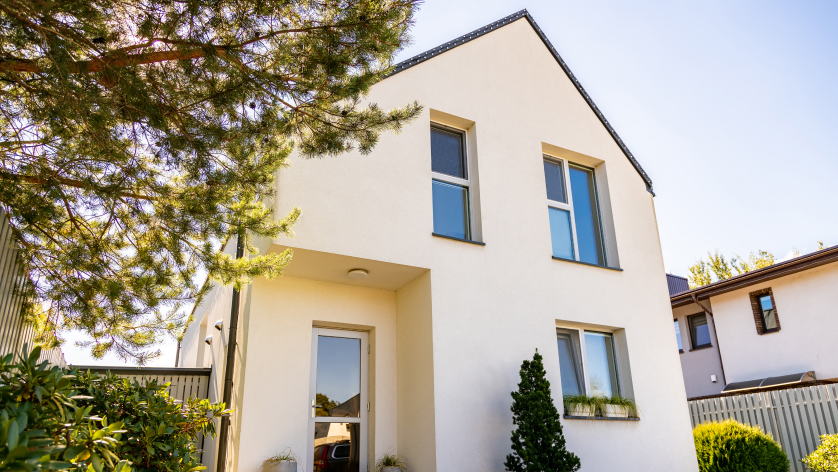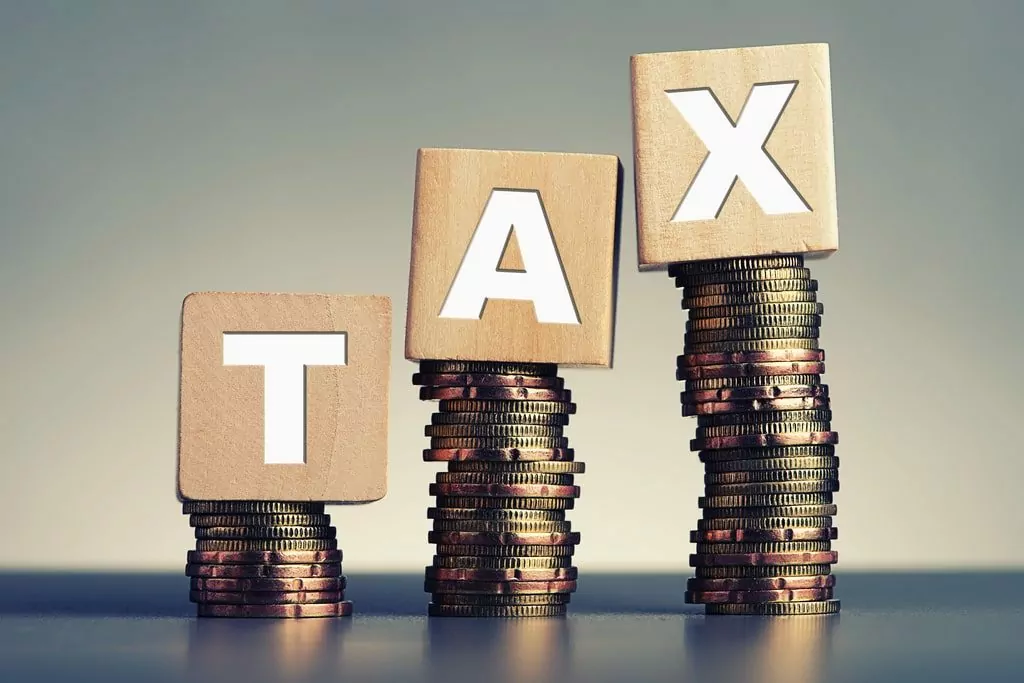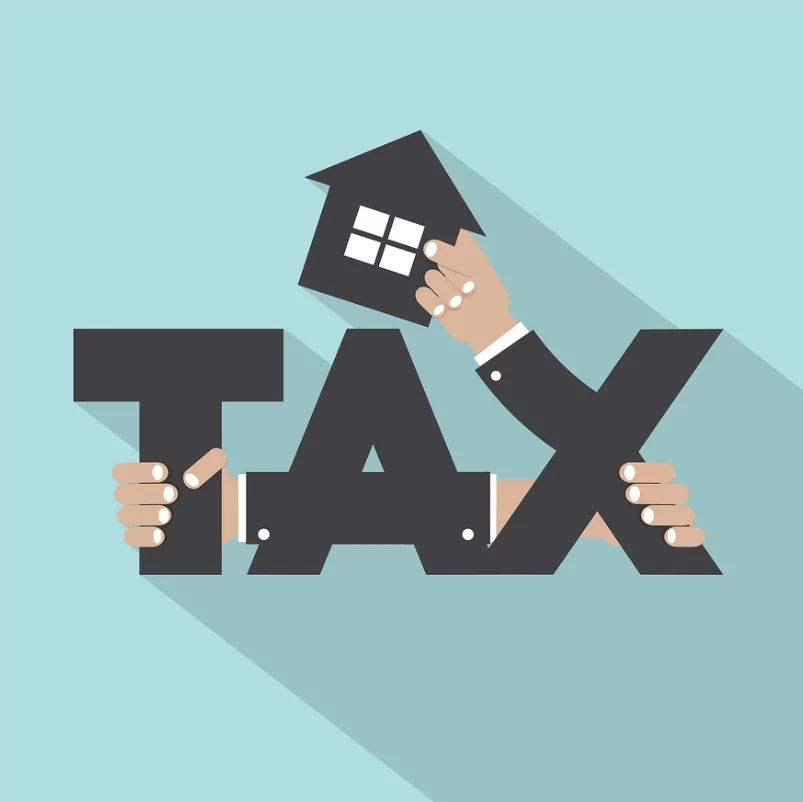Selling a rental property can be a significant financial event for landlords and real estate investors. Beyond the sale price and closing costs, you must also consider the potential tax implications of the transaction. One of the most substantial taxes you might face is the capital gains tax.
Understanding when this tax applies, how it is calculated, and strategies to reduce it is essential for maximizing your return on investment. This article will explain the fundamentals of capital gains tax on rental properties and explore ways you can legally minimize your tax liability.
As a landlord, you deal with various tax considerations, not just those related to selling. For instance, did you know there are strategies to [pay no taxes on rental income]?
Key takeaways
- Capital gains tax applies to the profit realized from selling a rental property.
- The tax rate depends on how long you owned the property (short-term or long-term).
- Depreciation recapture is taxed separately at a maximum rate of 25%.
- Your taxable gain is calculated based on the sale price, selling expenses, and adjusted basis.
- Strategies like 1031 exchanges, converting to a primary residence, and increasing your cost basis can help reduce or defer this tax.
What is the capital gains tax on rental property?
A capital gain is the difference between the selling price of an asset and its cost basis. For example, if you buy a property for $200,000 and sell it for $300,000, you have a potential capital gain.
This gain is considered “realized” once the sale is completed. At that point, it becomes subject to taxation by the IRS.
When you sell an asset like a rental property for more than you paid for it, you realize a capital gain. This gain represents the profit from the sale. The IRS generally taxes this profit.
How this applies specifically to rental property sales can seem complex. It depends on factors like how long you owned the property and how you used it.
The holding period is critical in determining the tax rate applied to your capital gain. This leads to the distinction between short-term and long-term capital gains.
How it applies to rental property sales
When you sell a rental property, the profit you make is typically subject to capital gains tax. This differs from ordinary income tax rates that apply to rental income itself. The calculation involves more than just the sale price minus the purchase price.
Factors like depreciation taken over the years significantly impact the taxable gain. Selling expenses also play a role in reducing the taxable amount.
Understanding these specifics is key to accurately predicting your tax liability. It helps you prepare financially for a potential sale.
Short-term vs. long-term capital gains
The length of time you own the rental property determines whether the gain is classified as short-term or long-term. This distinction is vital because it impacts the tax rate you will pay.
A short-term capital gain applies if you held the property for one year or less before selling, according to Investopedia. A long-term capital gain applies if you held the property for more than one year before selling. Holding a property long-term is often advantageous from a tax perspective due to lower rates.
For instance, holding a property for 366 days qualifies for the lower long-term rates, while holding it for 360 days results in higher short-term rates. This difference in holding period can mean significant tax savings.
How to calculate your capital gain
Calculating the exact capital gain on your rental property involves several steps. You need to determine the property’s adjusted basis, account for selling expenses, and calculate the total gain. This process requires careful record-keeping.
Accurate calculations ensure you report the correct amount on your tax return. It also helps you understand the potential impact of various tax reduction strategies. Let’s break down the calculation components.
Determining your adjusted basis
Your property’s adjusted basis is not simply the original purchase price. It starts with the initial cost, including the purchase price and certain acquisition costs like closing fees.
This basis is then increased by the cost of any capital improvements you made over the years. Capital improvements add value or prolong the property’s life, unlike routine repairs. For example, adding a new roof or updating a kitchen are typically capital improvements.
Conversely, the basis is decreased by any depreciation you claimed over the years. Depreciation accounts for the property’s gradual wear and tear. Tracking property expenses and improvements accurately helps determine your adjusted basis.
Property tax management software can assist in tracking these costs. Similarly, robust bookkeeping tools are essential for maintaining accurate records of all income and expenses, including capital improvements.
Calculating Total Gain
Once you have your adjusted basis, you can calculate the total gain from the sale. The total gain is the sale price minus your selling expenses and the adjusted basis. Selling expenses include costs like real estate agent commissions, legal fees, and title insurance.
For example, if you sell a property for $350,000, paid $20,000 in selling expenses, and your adjusted basis is $230,000, your total gain is $350,000 – $20,000 – $230,000 = $100,000. This total gain is the amount subject to potential taxation.
Understanding this calculation is the first step in determining your actual tax liability. It shows you the gross profit before considering the specifics of capital gains and depreciation recapture rates.
Example Calculation
Let’s walk through a detailed example calculation. Assume you bought a rental property for $200,000, paying $5,000 in closing costs. Over the years, you made $30,000 in capital improvements and claimed $40,000 in depreciation.
Your initial cost basis is $200,000 + $5,000 = $205,000. Your adjusted basis is $205,000 + $30,000 (improvements) – $40,000 (depreciation) = $195,000. Now, assume you sell the property for $350,000 and pay $25,000 in selling expenses.
Your total gain is $350,000 (sale price) – $25,000 (selling expenses) – $195,000 (adjusted basis) = $130,000. This $130,000 is your total taxable gain, which will be further broken down into depreciation recapture and capital gain portions for tax purposes.
What is depreciation recapture?
Depreciation is a tax deduction you take each year on your rental property. It accounts for the property’s aging and wear and tear. While beneficial during ownership, it comes with a tax implication upon sale.
This implication is known as depreciation recapture. It’s a specific type of gain that is taxed differently from your long-term capital gain. Understanding depreciation recapture is crucial for any landlord selling a property they have depreciated.
Depreciation recapture is the process by which the IRS recovers the tax benefit you received from claiming depreciation deductions. When you sell a rental property that you depreciated, you must “recapture” the amount of depreciation taken. This recaptured amount is then taxed.
The gain attributable to the depreciation you claimed is taxed separately from the remaining capital gain. This separate tax rate applies regardless of whether your overall gain is short-term or long-term. It’s a key part of calculating the total tax owed on the sale.
Essentially, the government is recouping the tax deferral you enjoyed by taking depreciation deductions. This prevents investors from benefiting twice: once from the annual deduction and again from a lower capital gains rate on the portion of the gain related to that deduction.
Learn more about depreciation on rental property and how it impacts your taxes.
How it affects your tax bill
The portion of your total gain that equals the amount of depreciation you claimed is subject to the depreciation recapture tax. This amount is typically taxed at a maximum rate of 25%. The remaining gain above the recaptured depreciation amount is then treated as either a short-term or long-term capital gain, taxed at those respective rates.
For instance, in our example where the total gain was $130,000 and total depreciation claimed was $40,000, the first $40,000 of the gain would be subject to the 25% depreciation recapture rate. The remaining gain of $130,000 – $40,000 = $90,000 would be the long-term capital gain subject to the lower capital gains rates. This breakdown shows why depreciation recapture significantly impacts the final tax bill.
It’s important to note that the 25% rate is a maximum. Your actual tax rate on depreciation recapture will be the lower of your ordinary income tax rate or 25%. For high-income earners, it’s typically 25%.
Depreciation recapture tax rate
The tax rate for unrecaptured Section 1250 gain, which applies to real property depreciation, is typically a maximum of 25%. This rate is generally higher than the long-term capital gains rates for many investors. This makes the depreciation recapture portion of your gain potentially more costly than the standard long-term capital gain portion.
This 25% rate is applied to the lesser of the total gain or the total depreciation claimed. If your total gain is less than the total depreciation claimed, only the total gain amount is subject to the 25% recapture rate. The remaining depreciation is not taxed.
Understanding this specific rate is crucial for accurate tax planning when selling a rental property. It highlights the importance of tracking your total accumulated depreciation.
Federal capital gains tax rates for rental property (2024 & 2025)
After accounting for depreciation recapture, the remaining gain on your rental property sale is subject to federal capital gains tax rates. These rates depend on your total taxable income and filing status. The rates differ for short-term and long-term gains.
Knowing the current and upcoming tax rates helps you plan the timing of your sale, if possible. Rates can change year to year.
Below are the rates for long-term capital gains and a note on short-term rates for 2024 and 2025. Remember that these rates apply to the gain after depreciation recapture.
Long-term Capital Gains Tax Rates
For 2024, the long-term capital gains tax rates are 0%, 15%, or 20%, according to Perplexity. These rates depend on your taxable income and filing status. The income thresholds determine which rate applies.
For single filers in 2024, the 0% rate applies to taxable income up to $47,025, the 15% rate applies to income from $47,026 to $518,900, and the 20% rate applies to income above $518,900. For 2025, the income thresholds are slightly adjusted, with the 0% rate applying up to $48,350, 15% up to $533,400, and 20% above $533,400 for single filers. Thresholds vary for other filing statuses like married filing jointly, head of household, and married filing separately.
Here is a summary of the 2025 long-term capital gains tax rates by filing status, based on taxable income:
| Filing Status | 0% Rate Up To | 15% Rate Up To | 20% Rate Above |
|---|---|---|---|
| Single | $48,350 | $533,400 | $533,400+ |
| Married Filing Jointly | $96,700 | $600,000 | $600,000+ |
| Head of Household | $72,600 | $566,850 | $566,850+ |
| Married Filing Separately | $48,350 | $300,000 | $300,000+ |
These thresholds are important for predicting the tax rate on the portion of your gain not subject to depreciation recapture. Planning the timing of a sale relative to your other income can sometimes impact which bracket applies.
Short-term capital gains tax rates
If you held the rental property for one year or less, any capital gain (after accounting for selling expenses and adjusted basis, but without depreciation recapture as you wouldn’t have significantly depreciated it yet) is considered short-term.
Short-term capital gains are taxed at your ordinary income tax rates. These rates can be significantly higher than long-term rates, potentially reaching as high as 37% in 2024 and 2025.
This high tax rate is a primary reason investors aim to hold properties for longer than one year before selling. The difference between the short-term ordinary income rates and the long-term capital gains rates (0%, 15%, or 20%) can be substantial. Therefore, holding a property for just over a year can result in significant tax savings.
Avoid quick flips unless the profit margins justify the higher tax burden. The tax difference alone can erase potential gains from a rapid sale.
The net investment income tax (NIIT)
In addition to capital gains tax, higher-income taxpayers may also owe the Net Investment Income Tax (NIIT). This is an additional 3.8% tax that can apply to capital gains and rental income. The NIIT applies to individuals with modified adjusted gross income above certain thresholds.
For 2024, the thresholds are $200,000 for single filers and $250,000 for those married filing jointly. For 2025, these thresholds remain the same, according to. If your income exceeds these levels, your capital gains and rental income might be subject to this extra tax.
This means your effective tax rate on capital gains could be your long-term rate (0%, 15%, or 20%) plus the 3.8% NIIT. For instance, a high-income investor could pay a combined rate of 23.8% (20% + 3.8%) on their long-term capital gains, plus the 25% on depreciation recapture.
Strategies to reduce or defer capital gains tax
While capital gains tax is a reality of selling appreciated assets, several legal strategies can help landlords reduce or defer the amount owed. These strategies require careful planning and adherence to IRS rules. Understanding these options allows you to make informed decisions before and during the sales process.
Implementing the right strategy can significantly impact your net proceeds from the sale. Consider these options based on your specific situation and investment goals. Some strategies involve reinvesting proceeds, while others relate to how the property was used or improved.
Hold the property for over a year
The simplest and most fundamental strategy is to ensure you hold the rental property for more than one year before selling. As discussed, this qualifies any capital gain (after depreciation recapture) for the lower long-term capital gains tax rates. The difference between short-term ordinary income rates (up to 37%) and long-term rates (0%, 15%, 20%) is substantial.
Even holding the property for one year and one day can result in significant tax savings compared to selling just before the one-year mark. This strategy requires patience, but is the easiest way to reduce the capital gains tax rate on the majority of your gain. Always verify the exact holding period rules with a tax professional before selling.
Calculate the exact holding period from the day you acquired the property to the day you sell it. This simple step can have a huge impact on your tax bill.
Utilize a 1031 exchange
A powerful tool for deferring capital gains tax on rental property is the 1031 exchange, also known as a like-kind exchange. This strategy allows investors to defer paying capital gains tax by reinvesting the proceeds from the sale of one investment property into a similar (“like-kind”) investment property. The tax is not eliminated, but deferred until the replacement property is eventually sold in a taxable transaction.
To qualify for a 1031 exchange, specific rules and timelines must be followed strictly. The replacement property must be identified within 45 days of selling the original property, and the exchange must be completed within 180 days. Both the relinquished and replacement properties must be used for business or investment purposes.
This is a complex strategy that typically requires using a qualified intermediary to handle the transaction. Failing to meet the deadlines or requirements can invalidate the exchange, triggering immediate taxation of the gain. A 1031 exchange is a valuable option for landlords looking to trade up or expand their portfolio without triggering a current tax event.
Convert to a primary residence
Another potential strategy, if applicable to your situation, is converting the rental property into your primary residence. If you meet certain requirements, you may be able to utilize the Section 121 exclusion upon sale. This exclusion allows single filers to exclude up to $250,000 of the gain from the sale of a primary residence and married filing jointly to exclude up to $500,000.
To qualify, you must have owned and used the home as your principal residence for at least two out of the five years preceding the sale. There are specific rules regarding how the exclusion applies to a property that was also used as a rental, often requiring prorating the exclusion based on business use.
This strategy is most effective if the property had substantial appreciation while it was your residence. Be aware that depreciation claimed while it was a rental is generally not eligible for the exclusion and is still subject to recapture. If you’ve used a property as a vacation rental, different vacation home tax rules may apply.
Implement tax-loss harvesting
Tax-loss harvesting is a strategy that involves selling other investments that have lost value. The losses generated from these sales can be used to offset capital gains from the rental property sale. Capital losses can first offset capital gains dollar for dollar.
If your capital losses exceed your capital gains, you can use up to $3,000 of the remaining loss to offset ordinary income per year. Any remaining loss can be carried forward to offset future gains. This strategy requires owning other assets in a taxable account that have declined in value.
This can be a useful tool to reduce your overall tax liability in the year you sell a rental property with a significant gain. It requires coordinating the sale of your rental property with the sale of other assets. Professional tax advice is recommended to implement this strategy effectively.
Increase your basis through capital improvements
As mentioned earlier, the cost of capital improvements increases your property’s adjusted basis. A higher adjusted basis results in a lower taxable capital gain. Therefore, making strategic capital improvements before selling can effectively reduce your tax liability.
It is crucial to distinguish between capital improvements and routine repairs. Repairs maintain the property’s current condition and are typically deductible as expenses in the year incurred. Capital improvements, however, add value, prolong life, or adapt the property for new uses and are added to the basis.
Examples of capital improvements include adding a deck, replacing the HVAC system, or remodeling a kitchen or bathroom. Keep meticulous records and receipts for all capital improvements to accurately calculate your adjusted basis upon sale. Good bookkeeping for your rental properties, perhaps using tools designed for landlords, can simplify tracking these costs.
Deduct selling expenses
Selling expenses directly reduce the amount of gain you report. These expenses are subtracted from the sale price before calculating the total gain. This effectively lowers your taxable capital gain.
Common deductible selling expenses include real estate agent commissions, escrow fees, title insurance costs, legal fees, and transfer taxes. Any costs incurred specifically to facilitate the sale are typically deductible. Keep records of all these expenses.
Ensuring you accurately track and deduct all eligible selling expenses is a straightforward way to minimize your taxable gain. Don’t overlook these costs when calculating your potential tax liability.
Sell in a lower income year
If possible, timing the sale of your rental property to occur in a year when your other taxable income is lower can potentially reduce your capital gains tax rate. The long-term capital gains tax rates (0%, 15%, 20%) are tiered based on your total taxable income. A lower income year might drop you into a lower tax bracket, resulting in a 0% or 15% rate instead of 20%.
This strategy requires flexibility in your sales timeline. It is often more feasible for landlords nearing retirement or those with variable income sources. This planning should be done in consultation with a tax professional to analyze the potential impact on your overall tax situation.
Consider how the capital gain from the sale will interact with all your other income sources for the year. A large capital gain itself might push you into a higher bracket regardless of other income.
Maximizing deductions related to your rental property
While not all deductions directly reduce your capital gain upon sale (depreciation reduces basis, increasing gain), understanding and claiming eligible deductions during your ownership period is vital for overall tax efficiency. Accurate record-keeping of expenses impacts your taxable income from rent and your adjusted basis when you sell.
Properly tracking all [rental property deductions] is key. This includes expenses incurred both during the ownership phase and related to the sale.
Overview of deductible expenses
Landlords can deduct various expenses related to owning and operating their rental properties, according to the IRS. These deductions reduce your taxable rental income each year. Examples include mortgage interest, property taxes, insurance, repairs, and management fees.
Accurate bookkeeping is essential to ensure you claim all eligible deductions annually. Tools designed for landlords, like Baselane’s bookkeeping features, can help categorize transactions correctly based on Schedule E categories. This simplifies tax preparation significantly.
Some expenses related to the sale itself, as noted before, are also deductible and reduce your capital gain. These are distinct from the operating expenses deducted annually. Landlord deductions can also include things like travel to the property for management purposes. Learn more about landlord deductions.
Mention key deductions like mortgage interest
One of the most significant deductions for landlords is the rental property mortgage interest deduction, according to the IRS. Interest paid on loans used to purchase or improve rental property is generally fully deductible. This reduces your taxable rental income annually.
Find out more about the rental property mortgage interest deduction.
Other notable deductions include property taxes, insurance premiums, and the cost of repairs and maintenance. Keeping detailed records of these expenses is critical. Bookkeeping software can automate the categorization of transactions, linking expenses to specific properties.
This level of organization is invaluable when preparing for tax season. It also helps accurately track costs that might relate to your adjusted basis upon sale. Good accounting for any type of rental, such as accounting for Airbnb or traditional long-term rentals, is fundamental for tax optimization.
Different property types like single-family home vs multi-family home may have different operational costs, but the principle of tracking and deducting expenses for tax purposes remains consistent. Managing finances across multiple properties requires robust tools, potentially involving separate banking accounts for each property and integrating with bookkeeping. Consider exploring Airbnb bank account options if you operate short-term rentals.
Managing property finances efficiently can be complex. Baselane Banking offers features like creating unlimited accounts for each property, simplifying expense tracking, and categorization for tax purposes. Paired with Baselane’s bookkeeping and rent collection tools, landlords can streamline their financial management, ensuring accurate records needed for calculating adjusted basis, deductible expenses, and ultimately, capital gains tax.
Reporting capital gains on your tax return
When you sell a rental property, you must report the transaction on your federal income tax return. This involves specific forms used to calculate and report your capital gain. Accurate reporting is essential for compliance.
Generally, you will use Form 8949, Sales and Other Dispositions of Capital Assets, to list the details of the sale, according to the IRS. The information from Form 8949 is then transferred to Schedule D, Capital Gains and Losses. Schedule D calculates your overall capital gain or loss for the year.
This information is then reported on your main tax form, Form 1040. Properly completing these forms requires careful calculation of your adjusted basis and the total gain, including depreciation recapture. Utilizing accurate records from your property’s financial history is crucial here.
State-level capital gains tax
In addition to the federal capital gains tax, many states also impose their own taxes on capital gains. The rules and rates vary significantly from state to state. Some states tax capital gains as ordinary income, while others have separate capital gains tax rates.
A few states have no state income tax at all, meaning they also have no state capital gains tax. It is essential to research the specific capital gains tax laws in the state where your rental property is located. This will impact your total tax liability upon sale.
For example, California has specific rules for capital gains, although a specific rate is not detailed in the research brief. Always consult state tax resources or a local tax professional. This ensures you comply with both federal and state requirements. The taxes on vacation rental income can also vary by state or locality.
Seek professional tax advice
Navigating capital gains tax on rental property sales can be complex. The rules regarding adjusted basis, depreciation recapture, different tax rates, and various reduction strategies require a thorough understanding of tax law. Making errors can result in overpaying taxes or facing penalties from the IRS.
It is highly recommended to consult with a qualified tax professional who specializes in real estate taxation. They can analyze your specific situation, help calculate your potential tax liability accurately, and advise you on the best strategies to minimize or defer your taxes legally. A professional can also ensure you are correctly reporting the sale on your tax return.
Investing in expert advice upfront can save you significant money and stress in the long run. Tax laws change, and a professional stays current on the latest regulations.
Bottomline
Selling a rental property involves navigating capital gains tax, a significant financial consideration for landlords. Understanding how capital gains are calculated, the difference between short-term and long-term gains, and the impact of depreciation recapture is fundamental. While this tax can be substantial, various strategies exist to help reduce or defer your liability, such as holding the property long-term, utilizing 1031 exchanges, or maximizing your adjusted basis through capital improvements.
Accurate financial record-keeping throughout your ownership period is crucial for calculating your basis, tracking deductible expenses, and preparing for sale. Tools like Baselane’s integrated banking, bookkeeping, and rent collection platform can simplify this process. By maintaining meticulous records and consulting with tax professionals, you can make informed decisions that help minimize your tax burden and maximize your investment returns when it’s time to sell. Explore how Baselane can streamline your rental property finances, making tax preparation and financial analysis easier.

FAQs
A capital gain on rental property is the profit you make when you sell it for more than your adjusted basis. This gain is typically subject to capital gains tax. The adjusted basis includes your purchase price, capital improvements, minus depreciation claimed.
Capital gains tax is calculated on the difference between the sale price (minus selling expenses) and your adjusted basis. This total gain is then separated into depreciation recapture (taxed up to 25%) and the remaining gain (taxed at 0%, 15%, or 20% depending on income and holding period).
Yes, depreciation recapture is taxed separately from the standard capital gain. The portion of your gain equivalent to the depreciation you claimed is taxed at a maximum rate of 25%, regardless of your income tax bracket or the long-term capital gains rates.
You cannot entirely avoid capital gains tax in a taxable sale if you realize a gain. However, you can defer it using strategies like a 1031 exchange, or exclude a portion of it by converting the property to your primary residence under Section 121 rules, if you qualify. Reducing the taxable gain through increased basis from capital improvements or deducting selling expenses also lowers the tax owed.
The 1031 exchange rule allows you to defer capital gains tax by reinvesting sale proceeds from one investment property into a "like-kind" replacement property. You must identify the new property within 45 days of the sale and complete the exchange within 180 days. The properties must be used for investment or business purposes.








